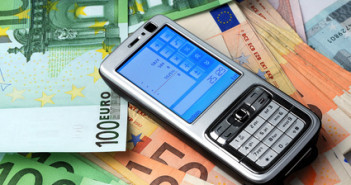The German Bundesbank and Mario Draghi have reservations regarding negative interest rates, that would punish strong banks, says Simon Smith of FxPro.
In the interview below, Smith also discusses the lower yields in the euro-zone, how the sequester has yet to hit the US economy, and other topics.
 Simon has over seventeen years experience of macro forecasting and investment strategy research. Prior to joining FxPro in May 2010, Simon was a consultant with Thomson Reuters, having spent four years as Chief Economist at Weavering Capital. He has held economic and strategy positions with Standard & Poor’s, together with consultancy firms 4Cast and MMS International. Simon holds an MSc. in Economics from the University of London and a BSc. from Brunel University.
Simon has over seventeen years experience of macro forecasting and investment strategy research. Prior to joining FxPro in May 2010, Simon was a consultant with Thomson Reuters, having spent four years as Chief Economist at Weavering Capital. He has held economic and strategy positions with Standard & Poor’s, together with consultancy firms 4Cast and MMS International. Simon holds an MSc. in Economics from the University of London and a BSc. from Brunel University.
- ECB: Could the ECB consider setting a negative deposit rate? If so, how could such a step impact the euro?
I don’t think they will introduce a negative deposit rate, even if they cut their main rate to 0.50% (there was normally a 1% difference between them). The head of the German Bundesbank has expressed his reservations and the head of the ECB Draghi has also highlighted that it would create problems. It would punish strong banks and would weaken the euro as funds leave the Eurozone because they don’t want to be penalised at the ECB.
- Bond yields of Italy and Spain are lower in the primary and secondary markets. Could this enable breaking away from austerity?
It’s true that bond yields have moved lower in both Italy and Spain for a number of reasons. The impact of this only comes through slowly as debt is refinanced at lower rates, so the government’s overall interest rate bill will fall only slowly. Personally, I think it’s the weakness of the economy, that is more likely to cause a pushback from austerity. The benefits from lower funding costs will take just too long to make a difference.
- The US economy lost steam, partly due to lower government investment. Can policymakers in Washington step to the plate and offer some kind of new stimulus or cancel the sequester?
There is not necessarily a strong link between the sequester and the weaker than expected GDP, which was concentrated in defence spending where a lot of other factors are at play. The impact is likely to be more felt in the second half of this year and for now, there is little sign that we are going to get much in the way of movement towards a reasonable resolution.
- Recent data showed that Japan is still suffering from deflation. Will the effects of Abenomics just around the corner? Could the BOJ step up its efforts?
It’s far too early to expect to see any impact in the real sector data. There is going to be a transmission from the lower yen and the increased money supply through to the real economy. Most likely we’ll have to watch some of the investment data from the corporate side, together with wages and confidence data from the household sector before we see any pass through to the inflation data, which will likely be at least 6 months away. It’s difficult to see the BoJ stepping up its efforts until they have a chance to judge the impact of the latest policy measures, which were anyway substantially more than the market was expecting. The firmer yen could well continue, although at a modest pace, whilst we wait for these initial signs of (partial) success to come through.
- The UK surprised with stronger than expected growth in Q1 2013, according to the first release and this certainly helped the British pound. Is the economy out of the woods?
Over the previous six months the economy has been flat and it’s pretty difficult to envisage a scenario by which the UK economy moves to a situation of sustained growth when the Eurozone economy is still weak and the UK banking sector is still contracting. The UK has yet to build the model that is to replace debt-fuelled consumption. The aim was to shift towards investment and exports, but this has yet to be established. For sterling, we’ve seen a decent recovery from the lows on cable and this may have further to run, but I would still see cable weaker in the second quarter as a whole.
Further reading: the previous interview with Smith: Gold prices can face another shake out
